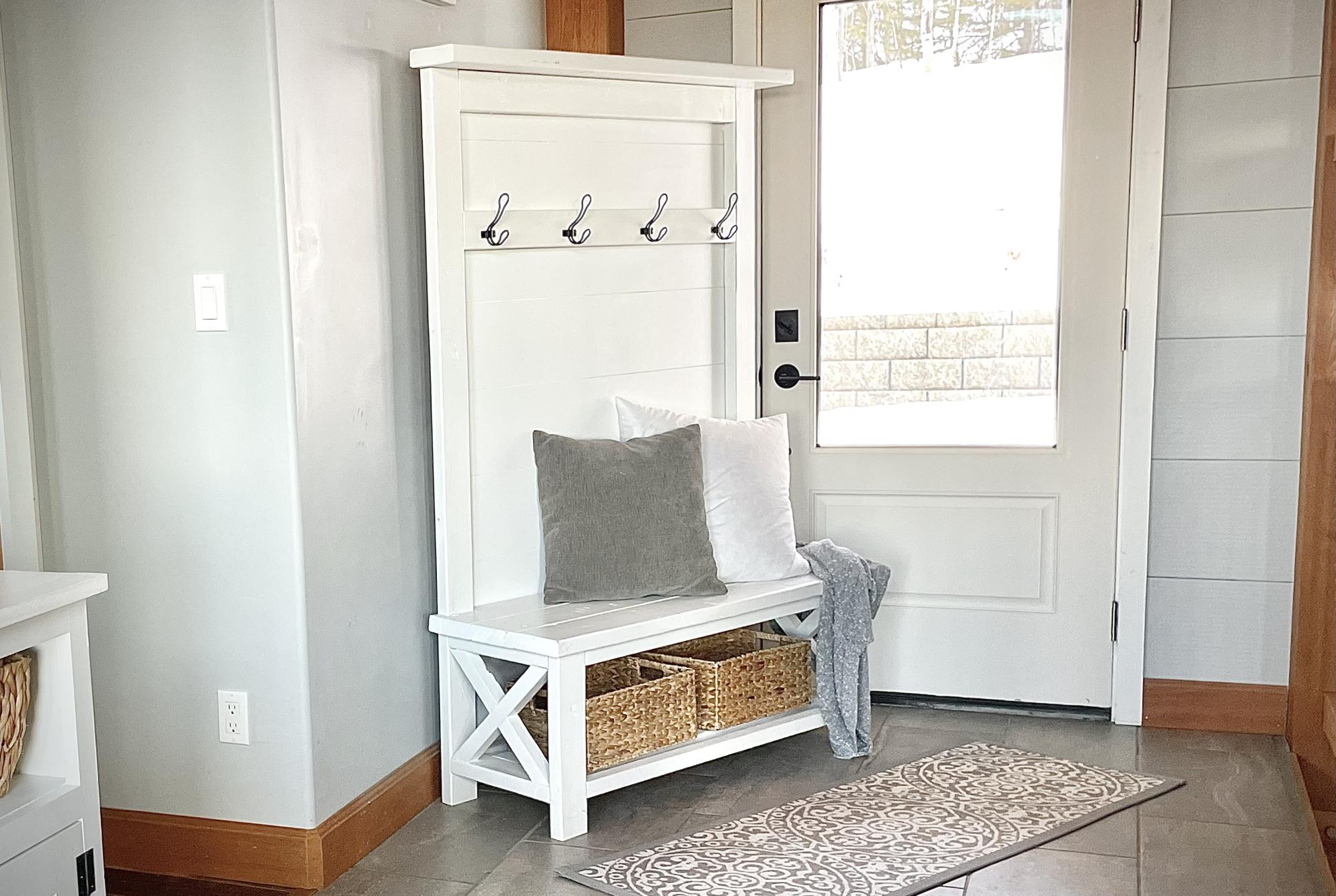
Create a beautiful entry for about $80 with our rustic hall tree. Built using 2x lumber, it's sturdy, functional, and gorgeous! Our free step by step plans include shopping and cut lists, and full diagrams. Plans by Ana-White.com
Build the entire collection and upgrade your home -
Collections
Dimensions
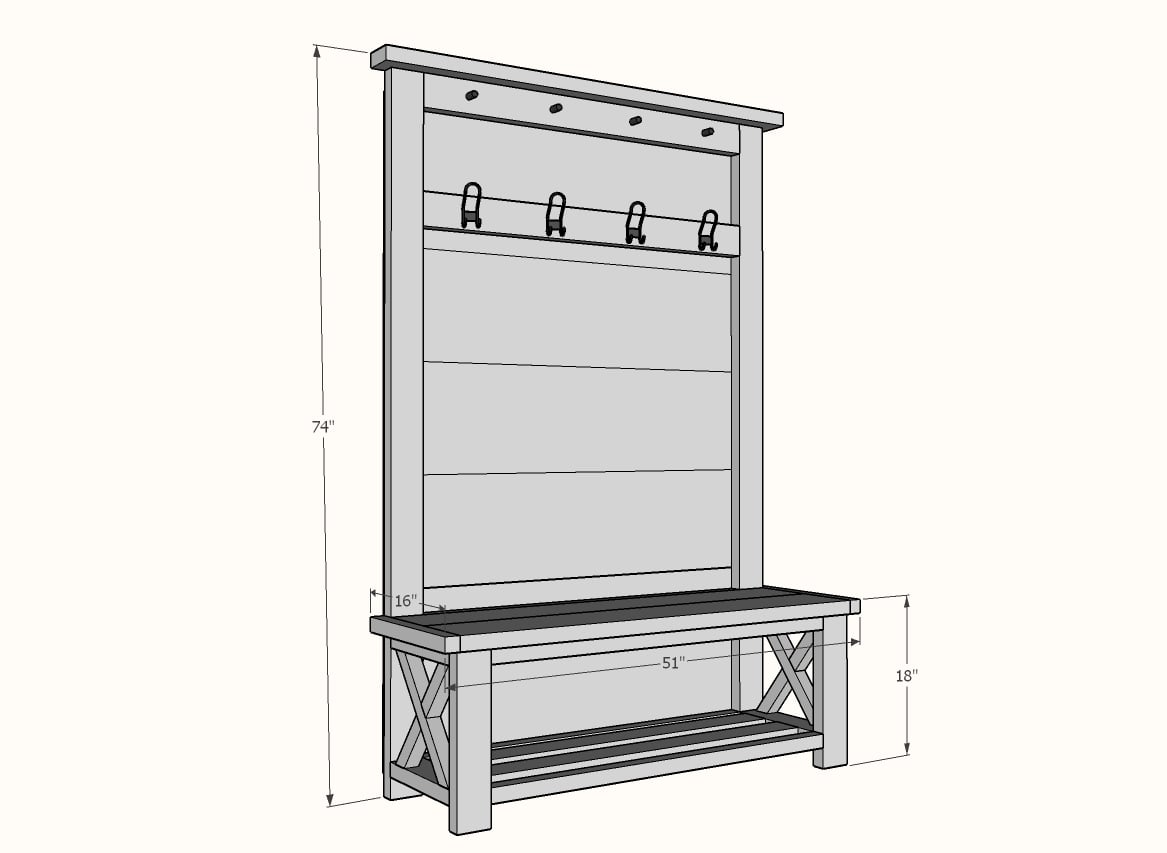
Dimensions shown in diagram
Preparation
Shopping List
- 6 - 2x4 x 8 feet long
- 3 - 2x2 x 8 feet long
- 1 - 2x8 x 8 feet long
- 50 - 2-1/2" pocket hole screws
- 25 - 2-1/2" self tapping wood screws for attaching the top (can use the pocket hole screws too)
- 3/4" brad nails for attaching the back and wood glue
- 4 hooks
Cut List
- 2 - 2x4 @ 16-1/2" - front legs
- 4 - 2x4 @ 12-1/2" - ends
- 2 - 2x4 @ 72-1/2" - back legs
- 5 - 2x4 @ 41" - horizontal tie ins
- 3 - 2x2 @ 41" - horizontal tie ins
- 2x2s for the Xs scribed and cut in plan
- 2 - 2x8 @ 48" - seat
- 2 - 2x2 @ 16" - seat ends
- 1 - 2x4 @ 51" - top
- 1/4" plywood 48" x 68-1/2" - back
Instructions
Step 1
Step 3
Step 4
Step 5
Scribe and cut the Xs as demonstrated in the video.
Attach the smaller X pieces to the larger piece with single 1-1/2" pocket holes with 2-1/2" pocket hole screws.
Then use 2-1/2" screws to attach the X from the outside of the legs. You can also use 2-1/2" pocket hole screws if you don't have other screws.
Step 6
Step 7
Finishing Instructions
Finish Used
For the finish we used Behr Marquee in off the shelf white in a semi-gloss finish. We sprayed and then finished with rollers and brushes.
Project Type
Room


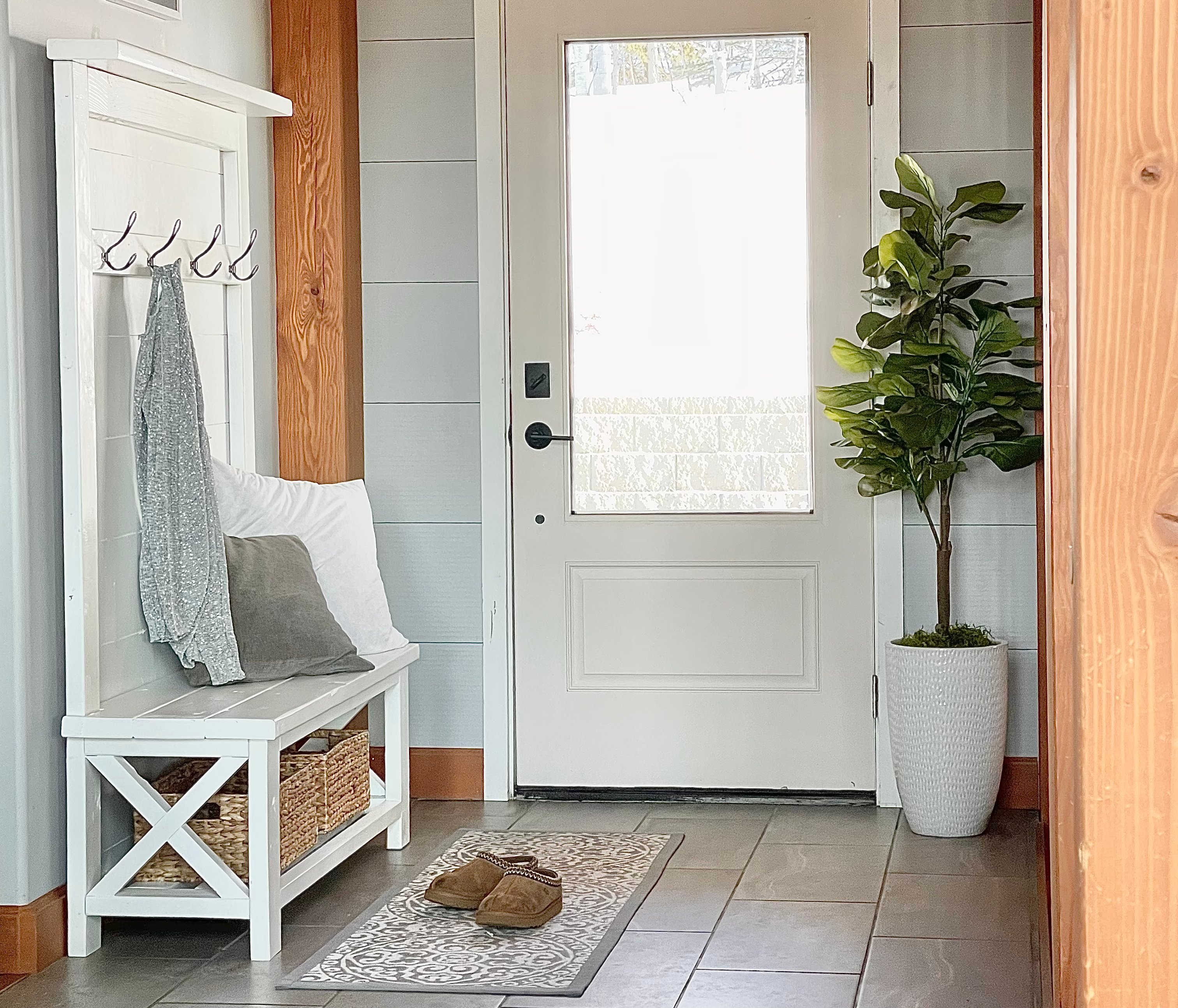
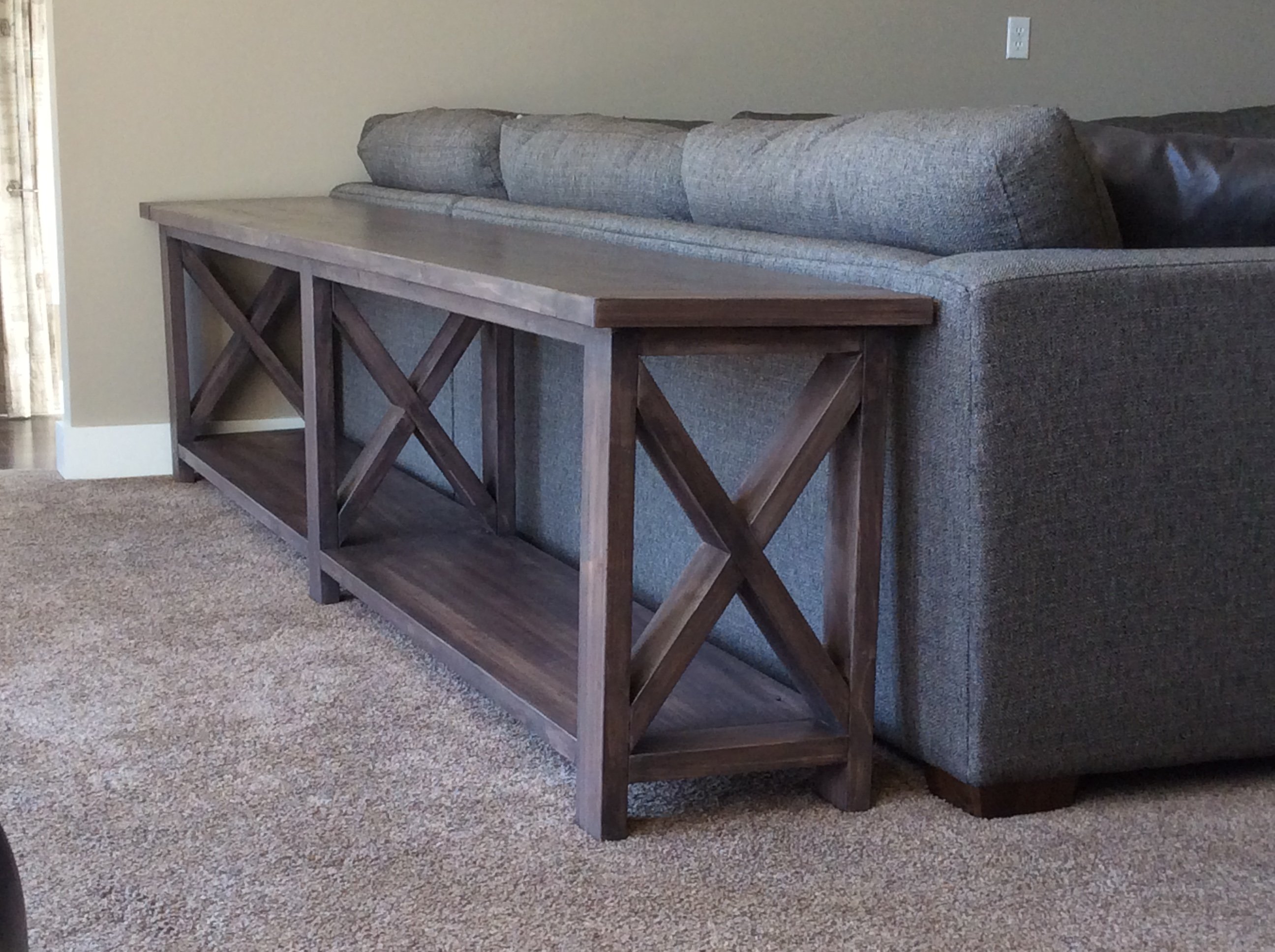










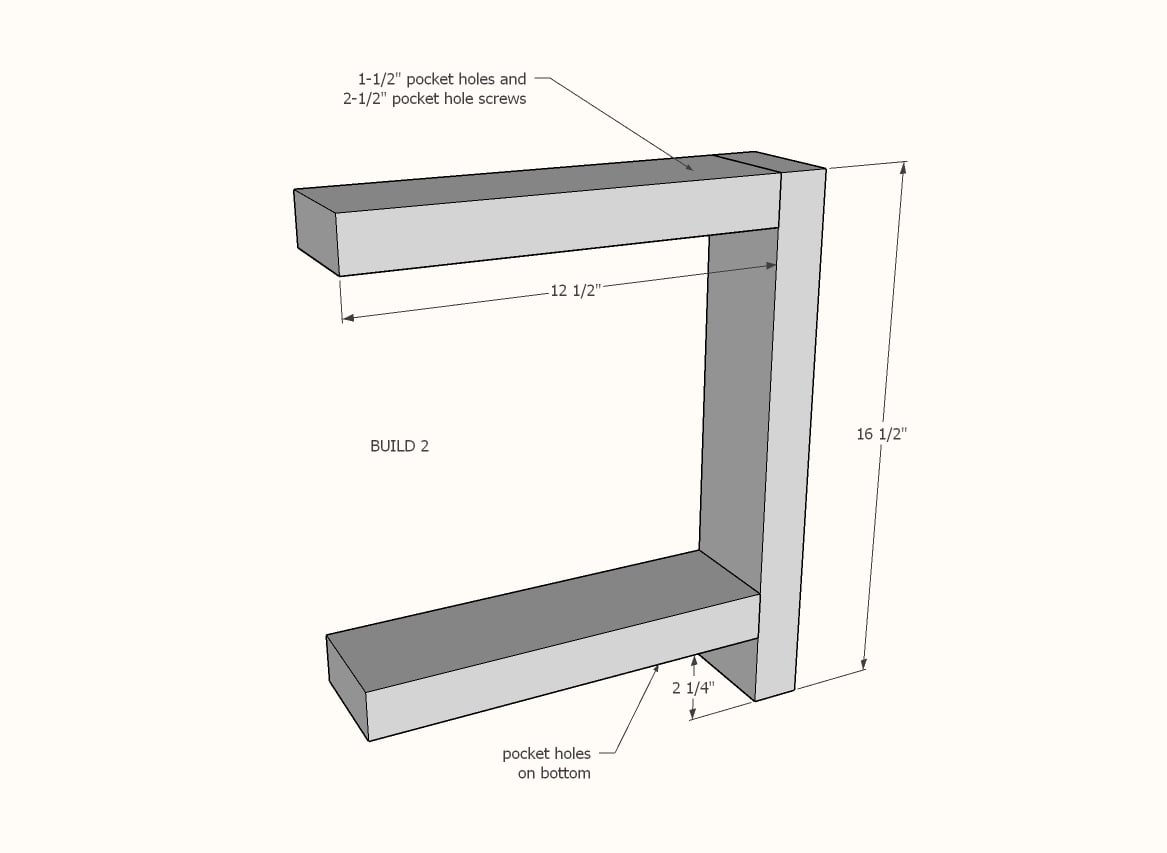
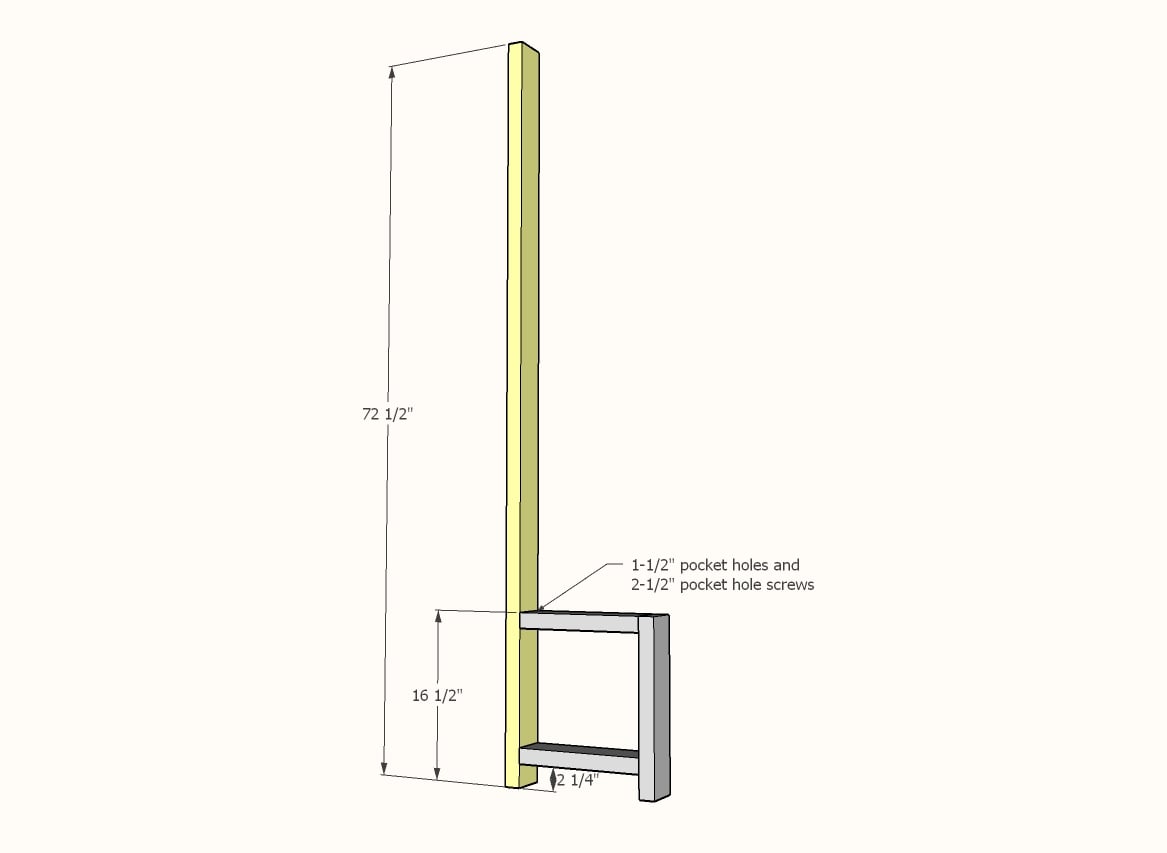
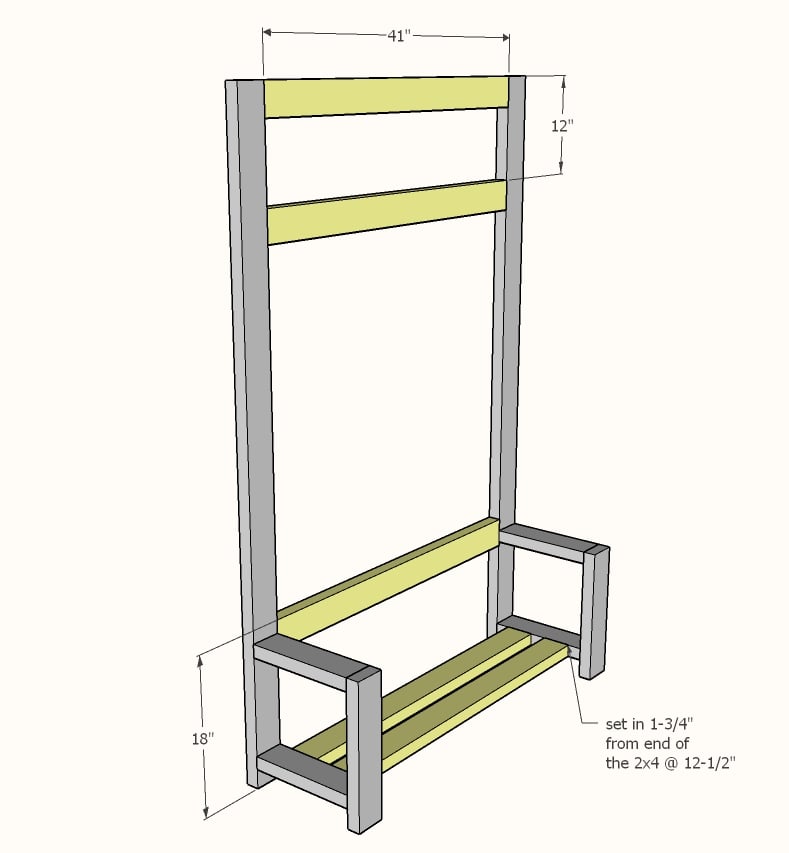
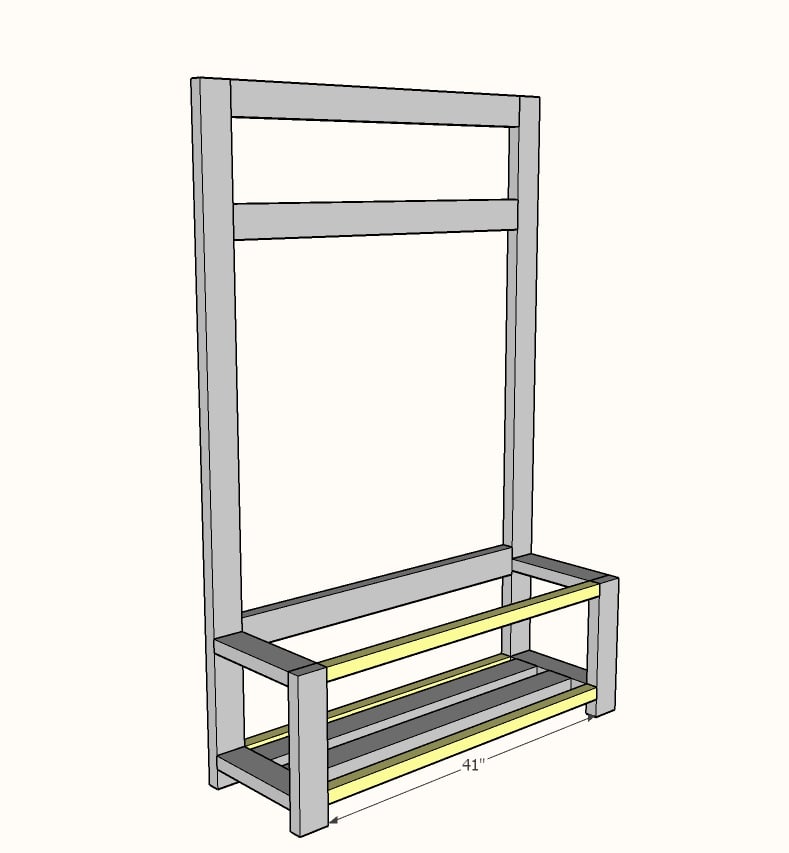
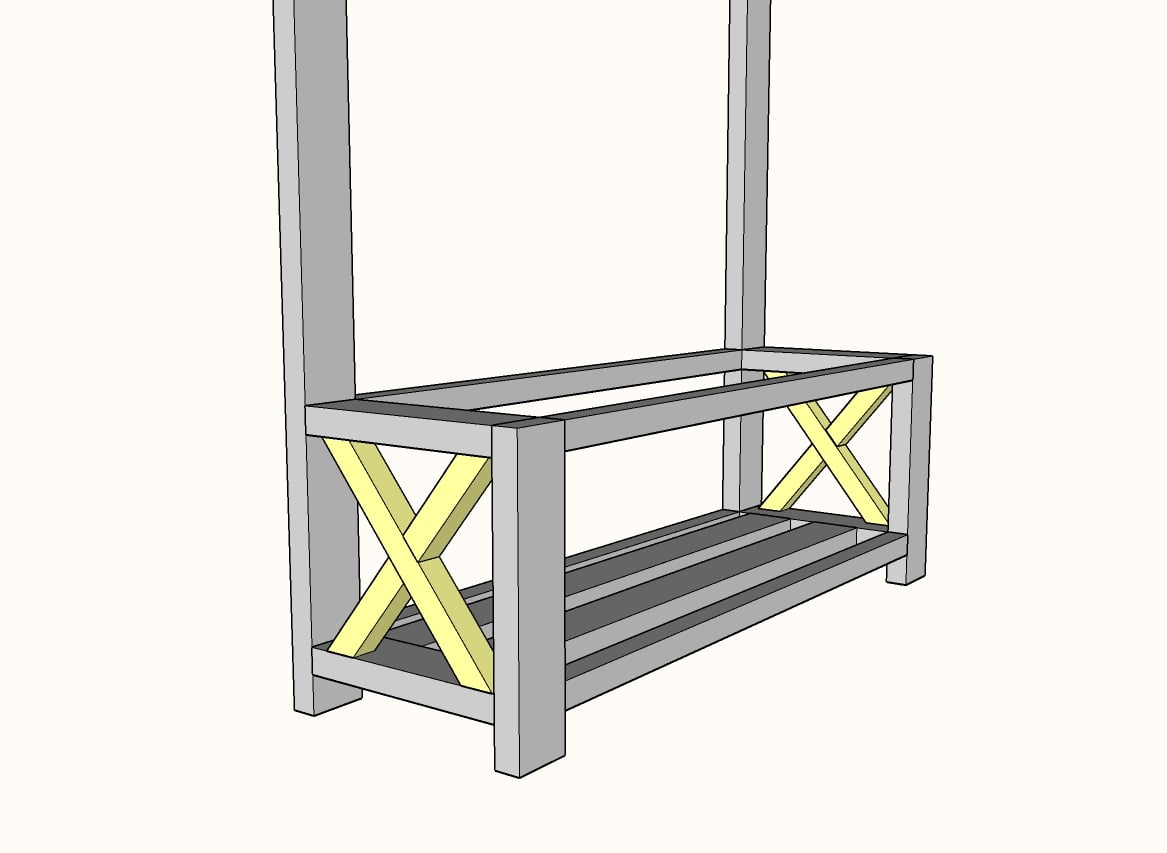
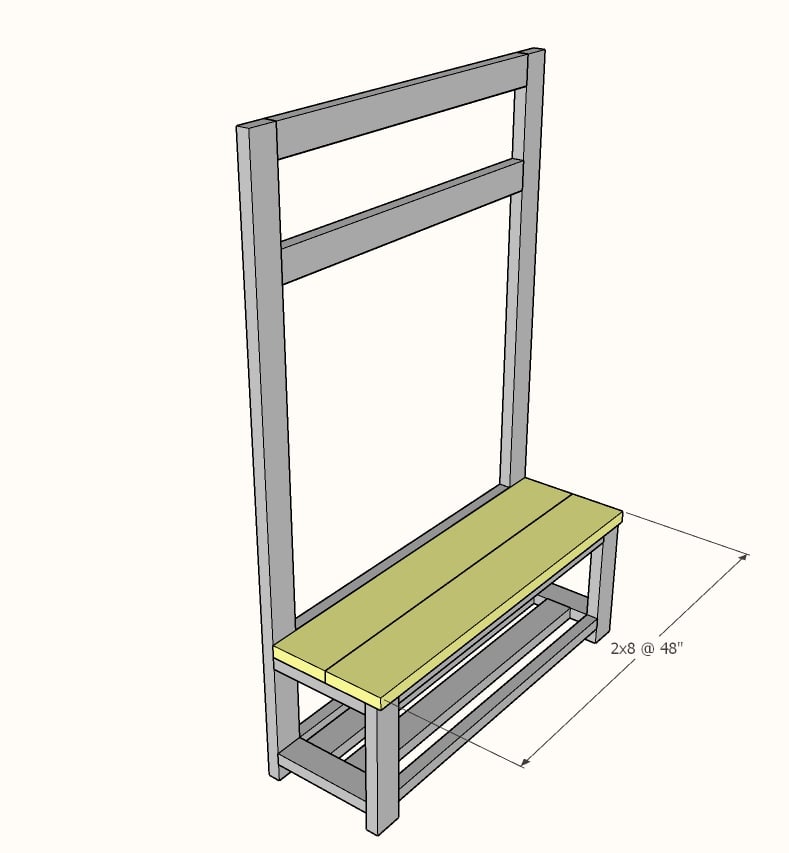
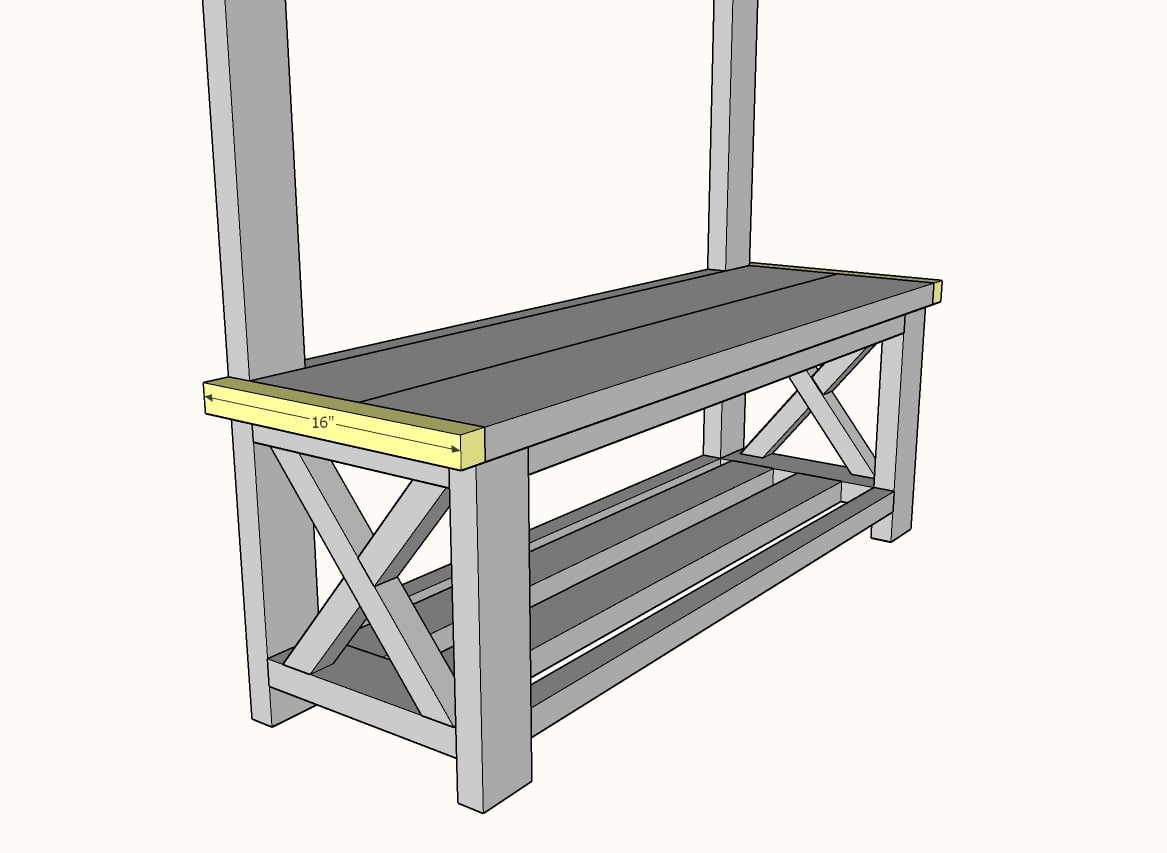
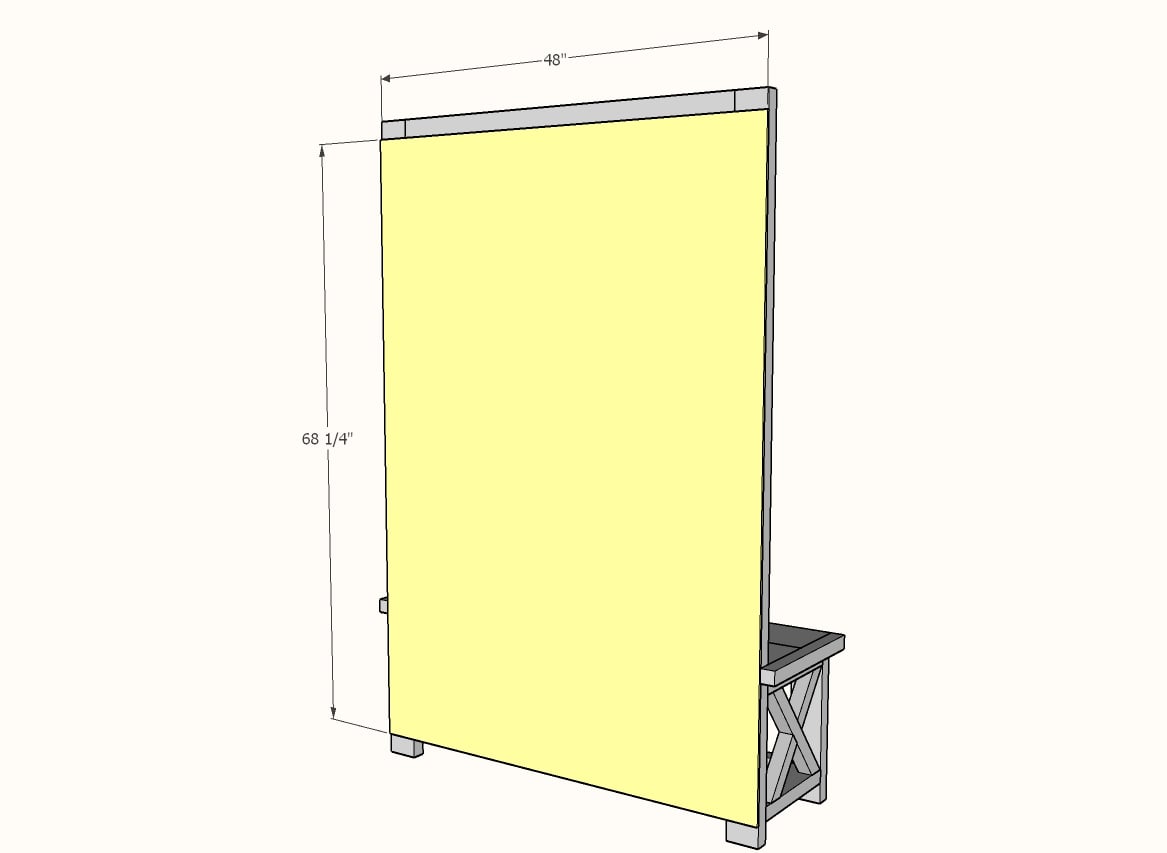

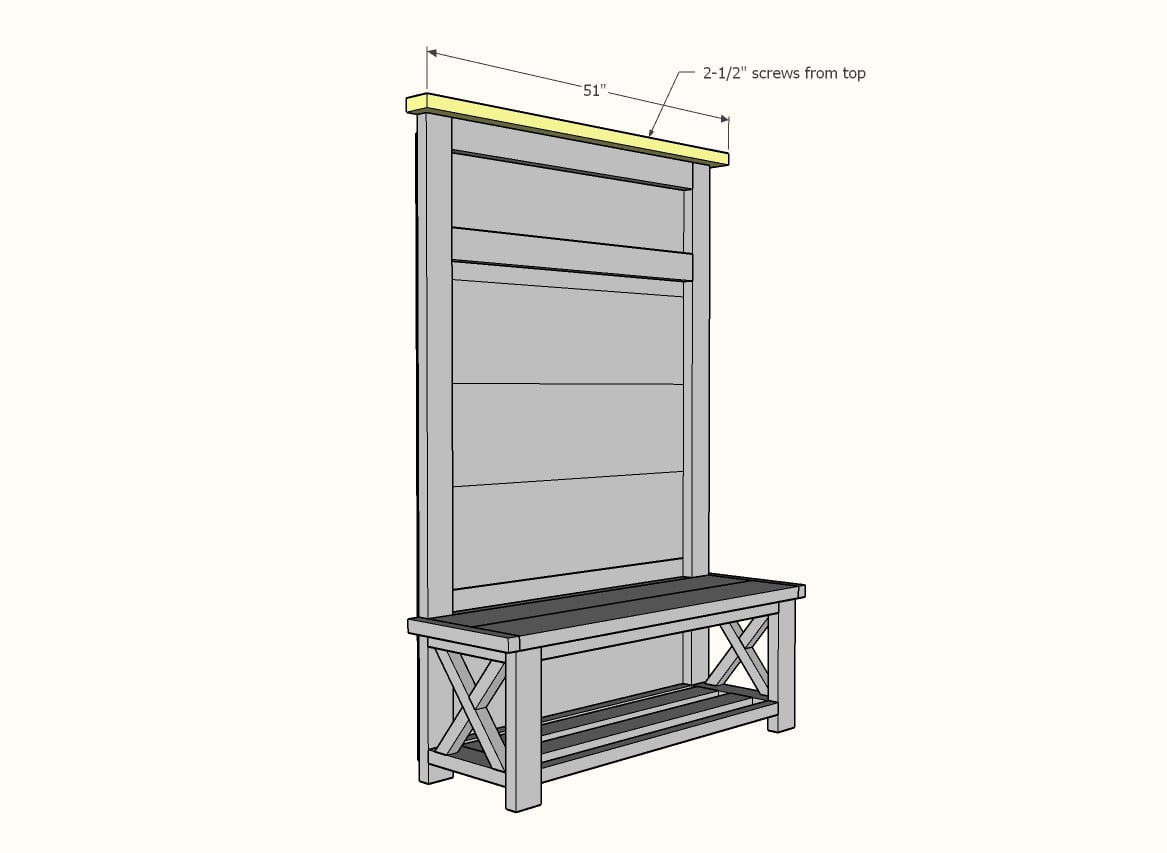
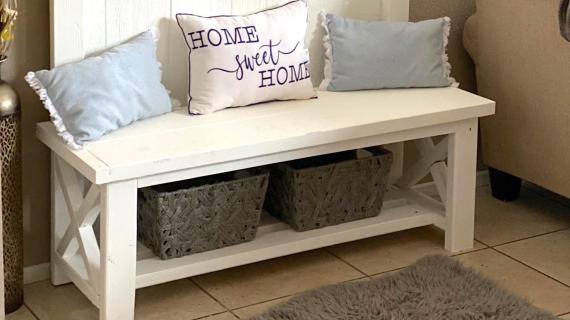
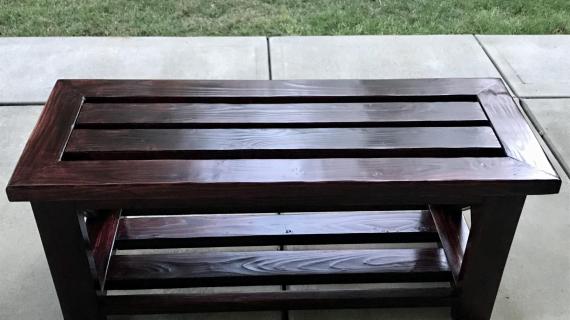
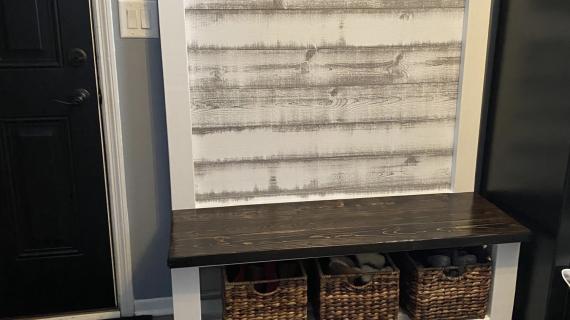
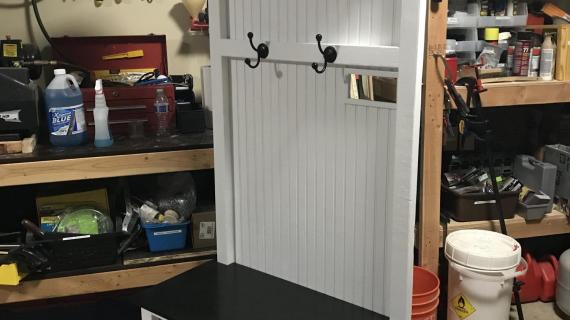
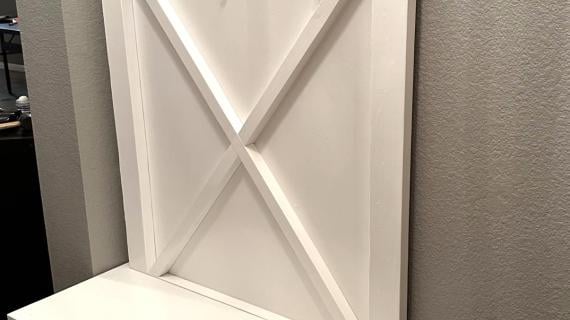
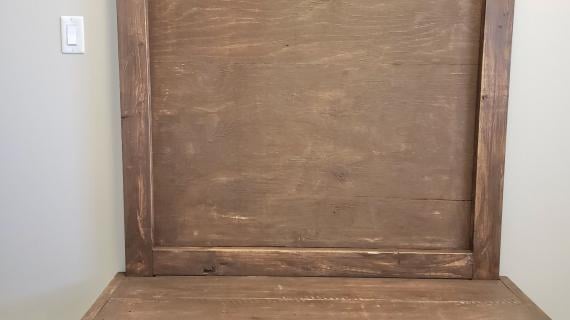
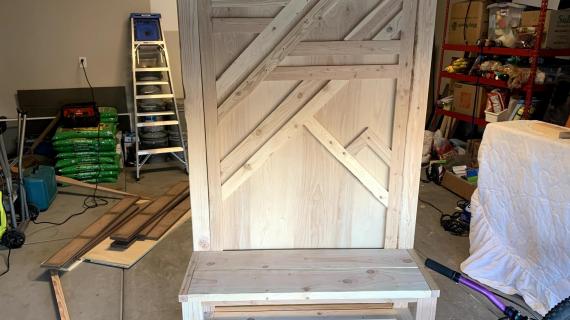
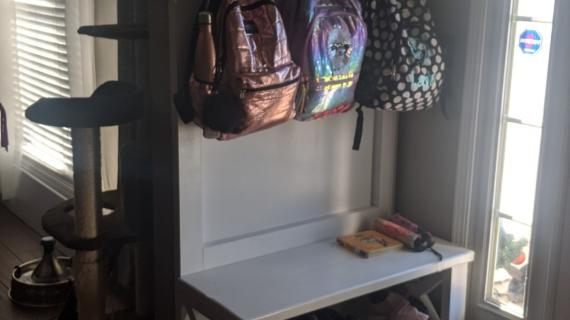
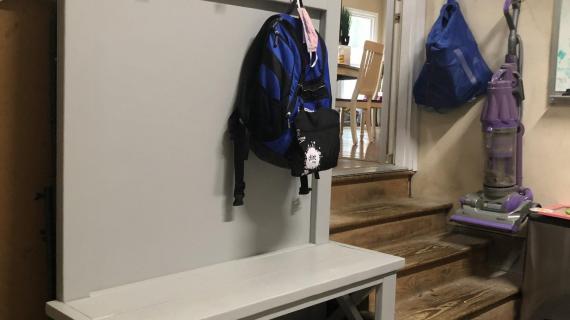
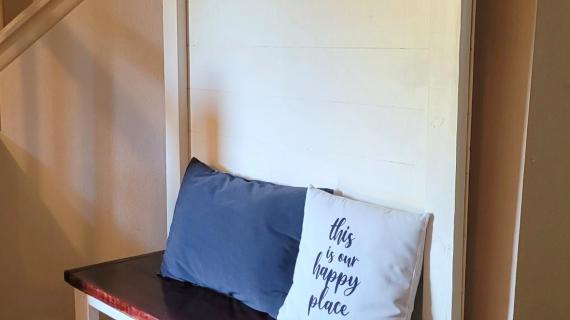
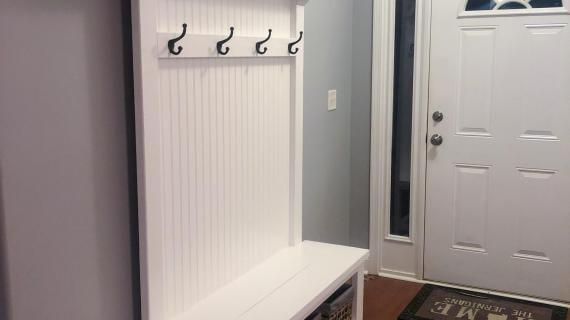

Comments
SuperGeorge
Mon, 12/30/2019 - 12:02
Completed this about a week…
Completed this about a week ago. As usual, I went with the "--" instead of the "X", but it still turns out great. Would have loved to upload, but no such opportunity. I need to look for my next project (preferably a bookshelf)
cdadams1223
Sat, 02/22/2020 - 16:38
Finished building this today…
Finished building this today. It was a fun build and I'll probably build a few more for friends/family. Wish I could figure out how to post my build.
jman11
Fri, 05/15/2020 - 14:39
Great Design!
Thanks for the plan. I built it with a few edits to make it slightly less rustic!
mpbmw94
Mon, 03/08/2021 - 11:46
Halltree
Thank you for the plan Ana. I changed it up a bit but I enjoyed building this halltree.